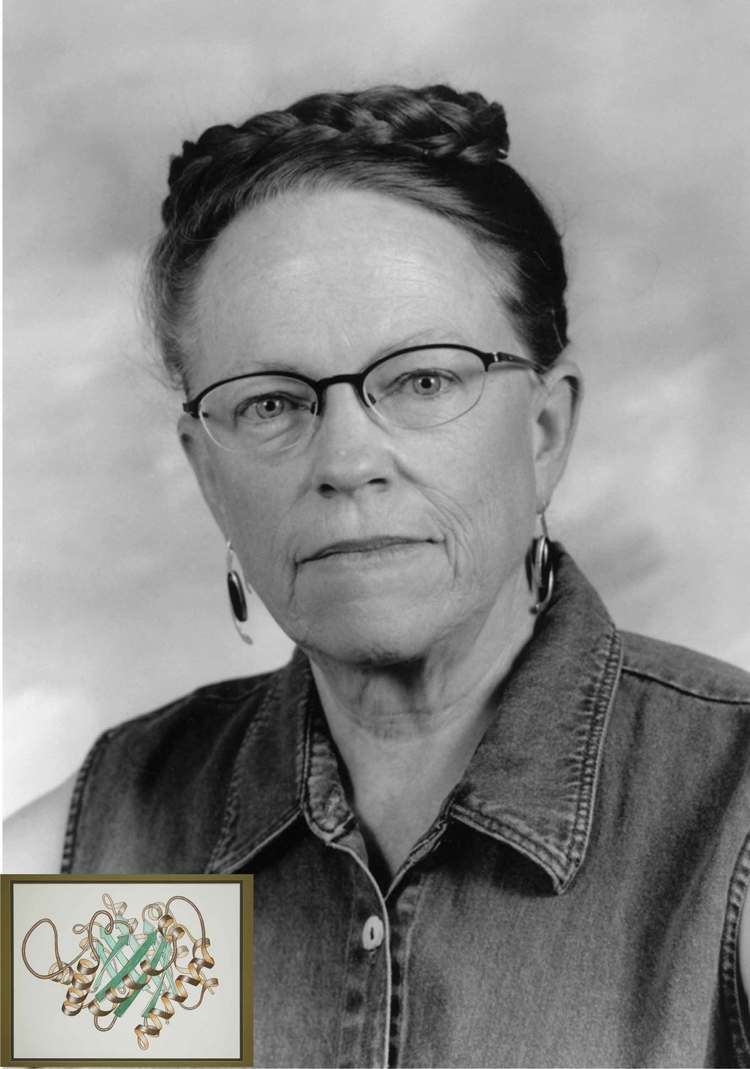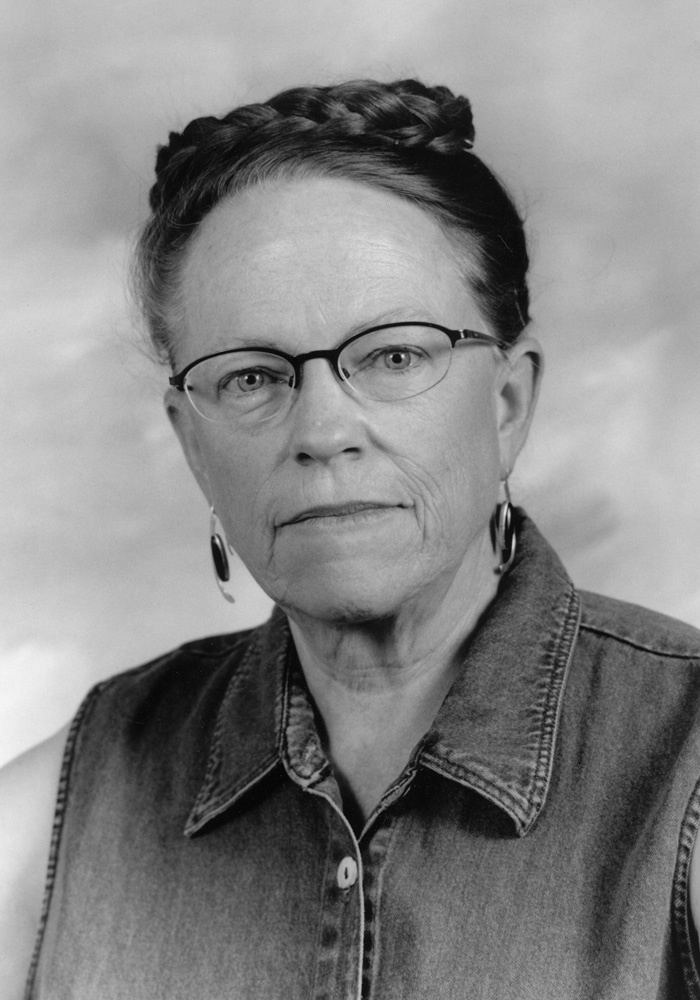Citizenship American | Name Jane Richardson | |
 | ||
Influences Christian Anfinsen, Frederick Brooks, Frederic Richards Notable awards MacArthur Fellowship (1985) Books The Kinemage Supplement To Molecular Biology Of The Cell 3: For Ibm, 3.5 Influenced by Christian B. Anfinsen, Fred Brooks, Frederic M. Richards | ||
Jane Shelby Richardson (born January 25, 1941) is an American biophysicist who developed the Richardson diagram, or ribbon diagram, method of representing the 3D structure of proteins. She is a professor in biochemistry at Duke University.
Contents

Biography
Richardson was born on January 25, 1941 and grew up in Teaneck, New Jersey. Her father was an electrical engineer and her mother was an English teacher. Her parents encouraged an interest in science and she was a member of local astronomy clubs as early as elementary school. She attended Teaneck High School and in 1958 while there won third place in the Westinghouse Science Talent Search, the most prestigious science fair in the United States, with calculations of the satellite Sputnik's orbit from her own observations.
She continued her education in science at Swarthmore College, enrolling with the intention of studying mathematics, astronomy and physics. She instead graduated Phi Beta Kappa with a bachelor's degree in philosophy with a minor in physics, and pursued graduate work in philosophy at Harvard University, receiving her master's degree in 1966. After finding herself unsuited to teaching high school, she joined her husband David C. Richardson, then completing his PhD work at MIT, in studying the 3-dimensional structure of the Staphylococcal nuclease protein (1SNS) by X-ray crystallography. It was one of the first dozen protein structures solved. She later began drawing her eponymous diagrams as a method of interpreting the structures of protein molecules. She has been promoted to many prestigious positions in academia. In July 1985 she was awarded a MacArthur Fellowship for her work in biochemistry. She was elected to the National Academy of Sciences and the American Academy of Arts and Sciences in 1991 and to the Institute of Medicine in 2006. She was elected president of the Biophysical Society for the 2012-2013 year, and a fellow of the American Crystallographic Association in 2012. Richardson is currently a James B. Duke Professor of Biochemistry at Duke University. As part of her role in the National Academy of Sciences, Richardson serves on panels that advise the White House and Pentagon regarding nationally important scientific matters (e.g.,).
The Richardsons jointly head a research group at Duke University.
Richardson is a contributor to Wikipedia, where she is a prominent member of WikiProject Biophysics.
Scientific work
Richardson's first forays into science were in the field of astronomy. By observing the position of Sputnik – at the time, the only artificial satellite – on two successive nights, she managed to calculate its predicted orbit. She submitted her results to the Westinghouse Science Talent Search, winning third place in 1958.
After earning her master's degree in philosophy, Richardson rejoined the scientific world in the mid 1960s, working as a technician in the same laboratory as her husband. Classes in botany and evolution that she had taken while pursuing her degree shaped her thinking about the work she was doing in the chemistry laboratory. During her crystallographic studies, Jane Richardson had come to realize that a general classification scheme can be developed from the recurring structural motifs of the proteins. In 1977 she published her results in Nature, in a paper entitled "β-sheet topology and the relatedness of proteins".
In the meantime, Jane and David Richardson had moved to Duke University in 1970, where they solved the first crystal structure of superoxide dismutase (2SOD). Richardson had developed the ribbon diagram over the course of her taxonomic research. Her iconic images first appeared in the review journal Advances in Protein Chemistry in 1981 (available in annotated form on-line at Anatax), an early hallmark publication in structural bioinformatics. They have since become a standard way of visualizing protein structure. Peter Agre, Nobel laureate and fellow Duke professor, said of the Richardsons' work: "Jane and David’s work allowed us to reveal the form of proteins, and from there it was easier to understand their function."
The Richardsons' more recent work has diversified beyond classification and crystallography. In the 1980s they stretched into the fields of synthetic biochemistry and computational biology as pioneers in the de novo design of proteins. In the 1990s they developed the kinemage system of molecular graphics and David wrote the Mage program to display them on small computers, for the then-new journal Protein Science, and they developed all-atom contact analysis (see image) to measure "goodness of fit" inside proteins and in interactions with surrounding molecules. The Richardson Laboratory currently studies structural motifs in RNA as well as proteins, as part of the RNA Ontology Consortium (ROC), acted as assessors in the CASP8 structure-prediction experiment (CASP), is one of the four developer teams on the PHENIX software system for x-ray crystallography of macromolecules, and hosts the MolProbity web service for validation and accuracy improvement of protein and RNA crystal structures. MolProbity uses the KiNG program (successor to Mage) for showing 3D kinemage graphics on-line. Jane serves on the worldwide Protein Data Bank (wwPDB) X-ray Validation Task Force and NMR Validation Task Force.
